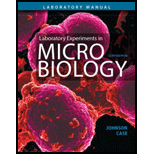
Concept explainers
Do all people who contact an infected individual acquire the disease?
To analyze:
If all the people who contact an infected individual acquire the disease.
Introduction:
Infectious diseases or infections are caused by pathogens like fungi, parasites, viruses or bacteria that can affect an organism indirectly or directly. Symptoms of disease depend on the type of organism responsible for causing the infection.
Explanation of Solution
Transmission of the disease is the process of spreading pathogen or causative agent between different hosts. A pathogen may spread between the host of the same species or different species. The mode of transmission of different pathogens varies depending on its life cycle and growth requirement. Transmission of the pathogen occurs through the following routes:
- Contact transmission: Some pathogens may infect a healthy individual by mere contact either direct or indirect, with the infected individual. Direct contact includes physical contact in the form of sexual intercourse, kiss, breastfeeding, during pregnancy or birth and through mucous. When a healthy individual acquires infection through sharing objects or medical equipment with the infected individual, it is termed as indirect contact transmission.
- Vehicle transmission: Vehicle transmission includes vehicles like air, water, and food, which when contaminated can transmit the pathogen into a healthy individual.
- Vector transmission: A biological or mechanical vector such as fly, is involved in the transmission of the pathogen. Mechanical vectors are involved in only transmitting a pathogen from one to another host whereas the biological vector itself acts as a host for the reproduction cycle of the pathogen, like in the case of malaria.
Therefore, the transmission of infection from an infected person to a healthy person depends on the pathogen and its mode of transmission. Hence, all people who come in contact with an infected individual do not acquire the disease.
Transmission of infection from an infected person to a healthy person depends on the pathogen and its mode of transmission. Hence, all people who come in contact with an infected individual do not acquire the disease.
Want to see more full solutions like this?
Chapter 39 Solutions
Laboratory Experiments in Microbiology (12th Edition) (What's New in Microbiology)
- Describe an experience that some had with an infective agent and what treatment was used to relieve the symptoms or cure the infection?arrow_forwarda person with AIDS is likely to develop infectious disease because the virus that causes AIDS ?arrow_forwardWhy is it important to be familiar with the symptoms and signs of a particular disease?arrow_forward
 Comprehensive Medical Assisting: Administrative a...NursingISBN:9781305964792Author:Wilburta Q. Lindh, Carol D. Tamparo, Barbara M. Dahl, Julie Morris, Cindy CorreaPublisher:Cengage Learning
Comprehensive Medical Assisting: Administrative a...NursingISBN:9781305964792Author:Wilburta Q. Lindh, Carol D. Tamparo, Barbara M. Dahl, Julie Morris, Cindy CorreaPublisher:Cengage Learning



